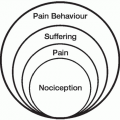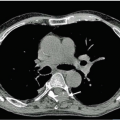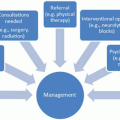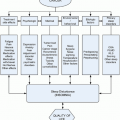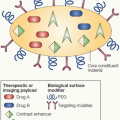Issues Affecting Well-Being in Cancer Patients
Cancer patients may experience a variety of symptoms as a result of their disease or its treatment. Common symptoms include fatigue, nausea, vomiting, pain, depression, and difficulty sleeping.1 Although many cancer-related symptoms are the result of the disease, it has been increasingly recognized that neuropathy, fatigue, sleep disturbance, cognitive dysfunction, and affective symptoms can also be caused by cancer treatment.2 Treatment-related symptoms may persist for extended periods and may even worsen, although the cancer itself is successfully treated.
Pain and symptom control are important components in comprehensive cancer care. Symptoms such as fatigue and sleep disturbances frequently occur together in patients who are receiving chemotherapy and radiation therapy.3, 4 In patients with advanced cancers, the primary cancer site strongly influences the development of symptom clusters. In a study of 1,366 cancer patients, Cheung et al.3 noted that the most common primary cancer sites were gastrointestinal, lung, and breast and that the three most distressful symptoms were fatigue, poor general well-being, and decreased appetite.3 Chow et al. found that anxiety and depression occurred together in patients with brain and bone metastases before and after palliative radiation therapy.5, 6
Cancer patients frequently experience multiple symptoms that can independently predict changes in patient function, quality of life (QoL), treatment failures, and post-therapeutic outcomes.7 Variance in QoL or functional outcomes is often determined by a set of symptoms.8 Given et al.9 demonstrated that pain and fatigue were independent and additive predictors of co-occurring symptoms. Patients with both pain and fatigue reported more symptoms overall than those who reported pain or fatigue alone or neither symptom. Symptom burden can be thought of as the sum of the severity and impact of symptoms reported by a significant proportion of patients with a given disease or treatment.10 Studies investigating the multiplicity of symptoms experienced by cancer patients show that pain, fatigue, sleep disturbance, emotional distress, and poor appetite are almost universally found to be co-occurring.11, 12, 13 These relatively nonspecific symptoms may not be monitored as closely as specific toxicities, and as a result, appropriate symptom management is often not addressed.10
Symptoms can vary independently. Symptom clusters may have different temporal patterns in response to treatment or disease progression.14 Improvement in one symptom (eg, depression) may not correlate with improvement in another (eg, fatigue).15 A National Institutes of Health statement on symptom management of pain, depression, and fatigue in cancer patients concluded that patients often were inadequately treated for these symptoms and that routine assessment should be mandatory.16 Of course, we want all patients with cancer to experience optimal control of all symptoms from the time of diagnosis throughout the course of illness. Personal and cultural characteristics can sometimes make this goal problematic, but we believe that clinicians must make the effort to ameliorate all of the patient’s symptoms as well as the underlying disease.
DEPRESSION IN CANCER PATIENTS
It is common for depressed patients to complain of a pervasive dysphoric mood, anhedonia, apathy and disinterest in normal activities, sleep problems, low energy, and, in severe cases, suicidal ideation. One fourth of all cancer patients meet criteria for major depressive syndrome at some point during their illness,17 whereas the prevalence of depression in the patient population at large approximates 6% for outpatients and 11% for inpatients.18, 19 Craig and Abeloff20 estimated an overall prevalence of depression at 53% for hospitalized cancer patients with varying primary sites and stages. Passik et al.19 noted that depression is more associated with certain tumor types, such as pancreas and lung, than with others. The severity of depression has been correlated with pain, anxiety, disease type, and other health-related QoL issues.21 Cancer pain, insomnia, fatigue, and depression and anxiety interact in complex ways; treatment plans must focus not only on the relief of specific symptoms to improve QoL but also on the impact of treatment on other symptoms. Depression seems to be more common with oropharyngeal (22% to 57%),22 pancreatic (33% to 50%),23 breast (1.5% to 46%),24 and lung cancer patients (11% to 44%).25, 26 Significantly lower prevalence of depression has been reported in patients with colon (13% to 25%)27 and gynecological (12% to 23%) cancers,28, 29 and lymphoma (8% to 19%).30, 31
Depression has been described as an aggregation of mood disorders, as the evolving Diagnostic and Statistical Manual of Mental Disorders (DSM) classifications of the American Psychiatric Association indicate. To address the complexity of mood disorders, much of the classical thinking on depression attempted to force depressive syndromes (and patients) onto one or another continuum characterized by extremes at the poles.32, 33 Two common continua are reactive versus endogenous and neurotic versus psychotic depression. The various continua differ less than one might expect in basic characterizations of depression, and for our purposes, they are nearly equivalent. For simplicity, and because its language fits the cancer patient
more readily, we describe the reactive-endogenous continuum that we use in our daily patient assessments.
more readily, we describe the reactive-endogenous continuum that we use in our daily patient assessments.
Patients at the reactive pole usually link their depression to an event, a stressful situation, or a loss. In the cancer patient, the cancer diagnosis itself can serve as the precipitating event, as can the failure of an antineoplastic intervention, the loss of the ability to work, or mutilating and/or debilitating surgical procedures. Depressed cancer patients usually admit to anxiety, restlessness, irritability, problems falling asleep, and sometime to obsessional thinking or other obsessional problems. We have found that they will often not present depressive symptoms to their physician on the assumption that the physician is concerned only with the cancer itself. Those at the endogenous pole appear to develop depression without a precipitating cause. They tend to show marked slowing in motor responses, early-morning wakening with the most severe mood disturbance in the morning, weight loss, and feelings of hopelessness. One form of endogenous depression is bipolar mood disorder, in which patients shift between the extremes of depression and mania. A genetic predisposition for unipolar and bipolar depression clearly exists.34 In such patients, the past history of depressive disorder is the best indicator of current endogenous depression. Most patients will fall between the polar extremes of reactive and endogenous depression.
DETECTING AND ASSESSING DEPRESSION IN THE CANCER PATIENT
Depression must be recognized and treated if the patient with pain from cancer is to be optimally managed (Table 5.1). If not identified and treated, depression has a significant negative impact on patient QoL, health care utilization, 22 and even disease outcome.35
Depression can be thought of as having two components: the psychological or “cognitive” component (eg, mood) and the physical or “somatic” component (eg, loss of appetite). All too often, depression goes unnoticed or unaddressed in the cancer patient.36 Most physicians focus on somatic rather than psychological problems in patients with life-threatening illness, and some erroneously regard reactive depression in a patient who has received a diagnosis of cancer to be a normal response. Few oncologists or supporting consultants feel qualified to address depression, and for those who do, time limits on patient contact time make it difficult to engage in extensive questioning about psychological well-being. Patients and family members may add to the problem by assuming that care providers concern themselves solely with controlling the disease and wish to avoid the distractions that psychological management entails.
The symptom overlap between the psychiatric disorder, the toxicities of treatment, and the effects of the primary disease may render the diagnosis of depression difficult. Anxiety and depression may mimic physical symptoms of cancer or its treatments, and the emotional basis for distress can be overlooked. Chemotherapeutic agents (such as vincristine, vinblastine, L-asparaginase, procarbazine or cytoxin), biologic interventions such as interferon or interleukin, the antifungal agent amphotericin B, the toxic sequelae of whole-brain irradiation, and paraneoplastic syndromes can all lead to symptoms that resemble depression. Consequently, many of the physical symptoms of depression such as fatigue, diminished appetite, and weight loss also occur in emotionally healthy cancer patients.37 In a study of the psychiatric morbidity among cancer patients, Alexander et al.38 reported that psychiatric morbidity was less common in patients unaware of their cancer or in those who considered their treatment as curative. Aass et al.39 noted that impaired social life, impaired professional work, and previous psychiatric problems were significantly correlated with depression, anxiety, physical function, fatigue, and pain in cancer patients. Depression, but not anxiety, increased in the presence of distant metastases, relapse, or progression and also increased when the diagnosis was made less than 1 month before assessment. They also found gender and age had no influence on the prevalence of depression. In a study of 148 postoperative breast cancer patients undergoing no active cancer treatment except hormones, Akechi et al.40 found that biomedical factors (disease stage, performance status, and physical symptoms) were not significant determinants of psychiatric morbidity. In this study, family problems and coping responses were found to be more important.
TABLE 5.1 DEPRESSION AND PAIN: IMPACTS ON CANCER PATIENTS | ||||||||||||||
|---|---|---|---|---|---|---|---|---|---|---|---|---|---|---|
|
It is widely known that depression exists in patients with cancer. The prevalence, however, varies widely by study and is often attributable to differences in assessment procedures.41 Bukberg et al.42 found that greater physical disability was associated with depression. The overall prevalence of depression was 42%, but a range of from 23% (in those with Karnofsky scores greater than 60) to 77% (in those with Karnofsky scores less than 40). Studies reporting the prevalence of depression in the terminally ill have ranged from 12.2% to 26%. Kadan-Lottick et al.43 reported that 12% of patients with advanced cancer met criteria for a major psychiatric condition and 28% had accessed a mental health intervention for a psychiatric illness since the cancer diagnosis. Overall, these patients experienced major psychiatric disorders at a prevalence similar to the general population, but affected individuals have a
low rate of utilizing mental health services (services were not accessed by 55% of patients with major psychiatric disorders). In terminally ill cancer patients, the incidence of depression may be three times greater among patients who did not acknowledge their terminal prognosis.44 Breitbart et al.45 found a 17% prevalence of depression and a 17% prevalence for a desire for hastened death in a study of 92 terminally ill cancer patients. Chochinov et al.46 noted that hopelessness significantly contributed to the prediction of suicidal ideation in terminally ill cancer patients even when the levels of depression were controlled.
low rate of utilizing mental health services (services were not accessed by 55% of patients with major psychiatric disorders). In terminally ill cancer patients, the incidence of depression may be three times greater among patients who did not acknowledge their terminal prognosis.44 Breitbart et al.45 found a 17% prevalence of depression and a 17% prevalence for a desire for hastened death in a study of 92 terminally ill cancer patients. Chochinov et al.46 noted that hopelessness significantly contributed to the prediction of suicidal ideation in terminally ill cancer patients even when the levels of depression were controlled.
Screening for depression should specifically address the cognitive/affective features, because these are not as readily confounded with treatment-associated toxicities. Several studies in palliative care patients have found that the single question “Are you depressed?” was the screening tool with the highest sensitivity and specificity and positive predictive value.47, 48 Cognitive/behavioral signs of depression include observable sadness, statements of pervasive despair, hopelessness or despondency, comments about being an unfair burden to others, expression of guilt or low self-esteem, and statements that life is and has been devoid of worth. Depressed patients also resist reassurances; for example, they tend to reject statements that a pain problem may not signal the progression of the disease. Depression has been studied in patients with cancer using a range of assessment methods. The methods (selfreport, brief screening instruments, and structured clinical interviews) commonly used are the Hospital Anxiety and Depression Scale (HADS), Beck Depression Inventory (BDI), European Organization for Research and Treatment of Cancer Quality of Life Questionnaire, Patient Health Questionnaire (PHQ-9), and DSM-IV criteria. BDI is a 21-item test presented in multiple choice format designed to measure presence and degree of depression in adolescents and adults. Each of the 21 self-report items of the BDI attempts to assess a specific symptom or attitude that is specific for depressed patients. The BDI-II is a 1996 revision of the BDI.49 Like the BDI, the BDI-II also contains 21 questions, and each answer is scored on a scale value of 0 to 3. The cutoffs used differ from the original: 0-13 represents minimal depression; 14-19 = mild depression; 20-28 = moderate depression; and 29-63 = severe depression. PHQ-9 contains a brief, nine-item patient self-report depression assessment specifically developed for use in primary care (Appendix J). The PHQ-9 has demonstrated usefulness as an assessment tool for the diagnosis of depression in primary care with acceptable reliability, validity, sensitivity, and specificity.50




Stay updated, free articles. Join our Telegram channel

Full access? Get Clinical Tree


